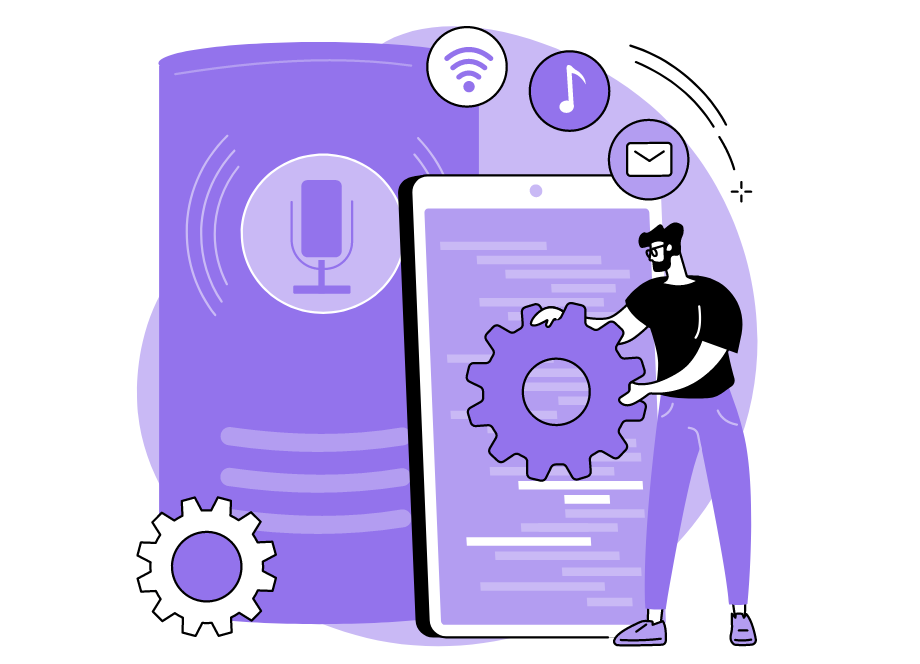
Do you want to stay current in the rapidly evolving world of mobile app testing?
Then read on because we’ve got the inside scoop on the hottest trends that are essential if you want to stay up-to-date and elevate your testing efforts.
From innovative approaches, such as cloud-based testing and the use of AI, to time-tested strategies like test automation, continuous integration and continuous delivery, these trends are steering the course of mobile app testing.
So, without further ado, let’s plunge into the six mobile app testing trends that are making waves right now.
Table of Contents
Testing mobile apps in the cloud
Conducting tests in the cloud is the latest buzz in the world of mobile app testing and for good reason.
Rather than being confined to local machines, it offers an incredibly scalable test infrastructure in the cloud where testers can inspect the app on real devices, emulators, and simulators, all accessible from anywhere in the world, as shown in the image below.
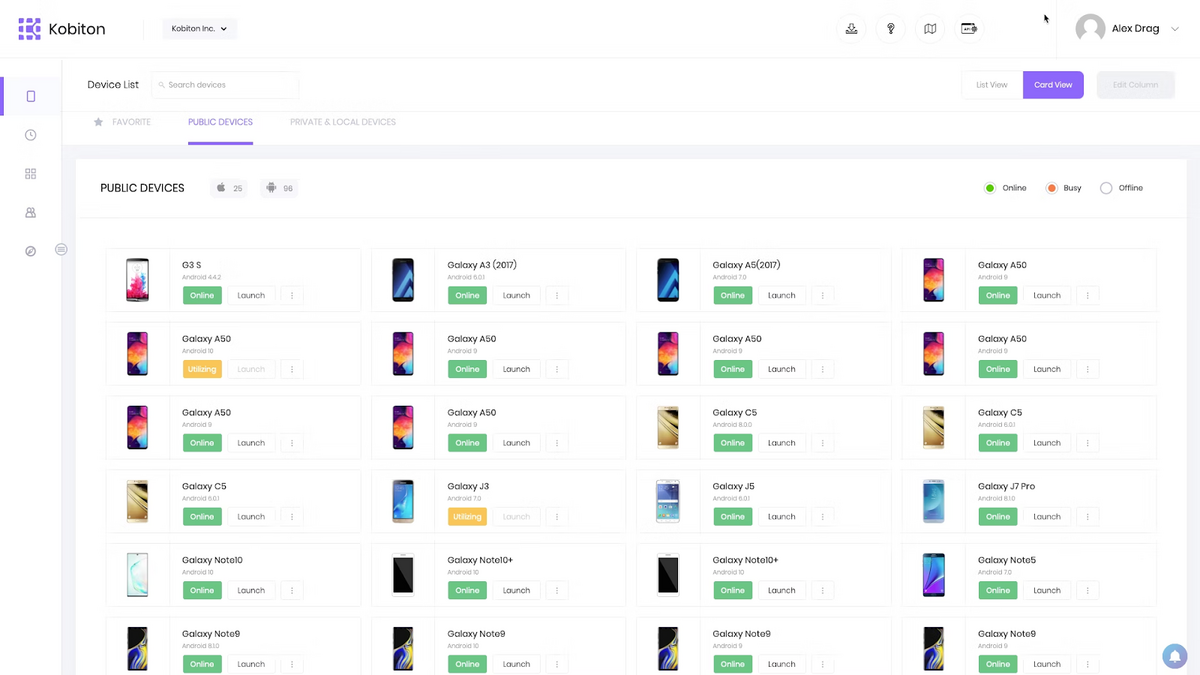
But why is this so crucial?
Because a flawless mobile app is essential to success in today’s market, and cloud testing offers the QA team the opportunity to test the app on a plethora of devices, OS systems, and environments, ensuring seamless functioning across the board.

Get unreal data to fix real issues in your app & web.
And with the growing prevalence of hybrid and remote work arrangements, the flexibility and scalability of cloud testing are more crucial than ever before.
Cloud-based testing offers numerous other benefits as well, including the following:
- The ability to run tests in parallel across multiple devices
- Broader device coverage by testing the latest iOS and Android devices as well as new OS releases
- Maintenance and updates are handled by the cloud provider
- Increased collaboration among QA teams
- 24/7 availability to run test scripts regardless of time zones
It’s no wonder that more and more companies are embracing this trend, moving away from on-premise solutions and opting to test their apps in the cloud using tools such as Kobiton, Perfecto, and Sauce Labs, to name just a few.
But, despite its appeal, this approach has some drawbacks.
First, the tools available for cloud testing aren’t open-source or free, they’re expensive.
And if you don’t know how cloud testing works, then learning it will take time and effort before you can use it for your app.
Still, the benefits of cloud testing are undeniable, and many companies are ready to ride the wave of this new testing trend.

Test automation
In the world of mobile app testing, test automation has emerged as a prominent trend that shows no sign of slowing down.
In essence, it’s a process that allows teams to create scripts that execute automated tests on an app, which can then be run repeatedly without human intervention.
Many teams are embracing the competitive edge of this process as they aim for a faster time to market.
In fact, according to the 2022 Kobiton’s State of Software Test Automation survey, 97% of QA specialists already use test automation, with a majority of them planning to increase their test automation efforts in the future, as you can see in the diagram below.
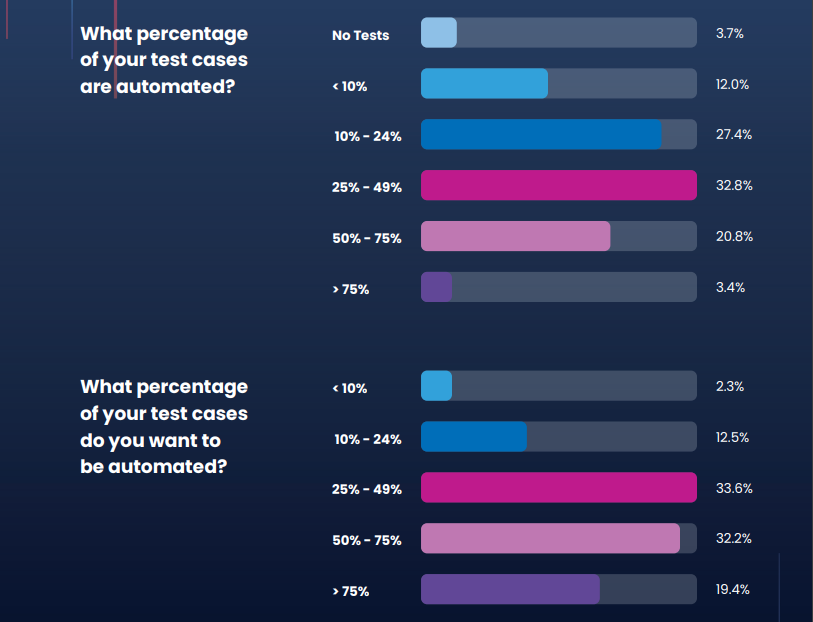
It’s not surprising that they prefer automated testing, given that, according to the same study, 47% of testers require 3-5 days to complete manual testing before a release, whereas automated tests take only 3-6 hours for 45% of testers.
However, the benefits of test automation extend far beyond efficiency:
- Runs on every build, regardless of who performs the test
- Provides more extensive test coverage
- Transforms testing into a continuous process, rather than a one-time event
- Expedites the testing process
Even though test automation can’t fully replace manual testing, it’s crucial in executing repetitive or data-intensive tests.
This point was affirmed by developers, automation testers, manual testers, and other participants in Simform’s test automation survey, who recognized how indispensable it is in the following areas:
- Functional testing
- API testing
- Regression testing
- Smoke testing
Conversely, manual testing remains the best approach for some other types of tests, including probability testing, story-level tests, and BDD framework tests.
All things considered, test automation is an expanding trend in the testing world that has already become an essential part of every tester’s toolkit.
Scriptless testing
Test automation doesn’t require only writing test scripts and executing them to verify that the features work as expected.
There is a second approach to automated testing called scriptless or codeless testing.
This process has been gaining momentum recently because, as its name suggests, it requires no code and it’s based on the idea that testers can develop automation suites without writing test scripts.
In fact, World Quality Report 2021-22 discovered that 48% of participants are willing to use scriptless automation in the future.
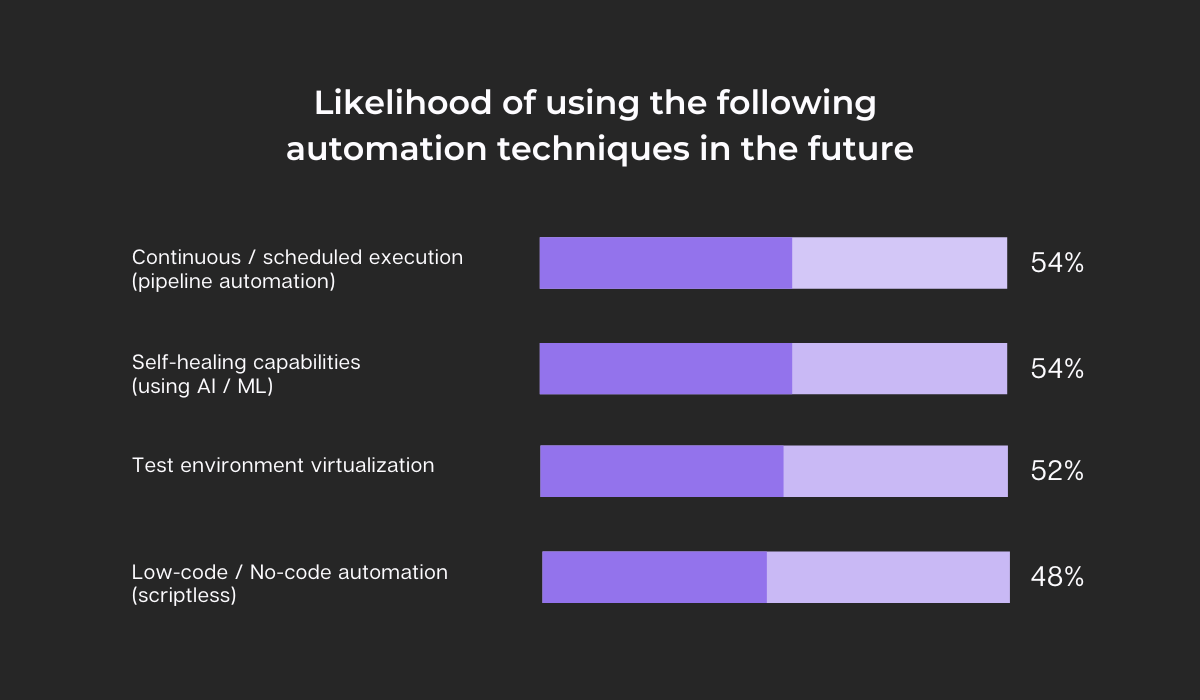
The main benefit of this approach is that it makes it easy for testers to start using automated testing methods with their existing skills.
This way, even testers who don’t have coding skills can take an active role in designing and automating tests.
Scriptless testing has two distinct approaches: recording manual testing sessions and playing them back, or creating test flow diagrams that can be used to execute tests.
The record and playback approach is the most popular one right now, with many companies using it to further automate their testing.
This type of automation operates by having testers manually execute test cases while the tool records their actions step-by-step, and then uses this data to create automated scripts for performing the same tests.
For instance, Katalon, a popular codeless automation platform, has this feature.
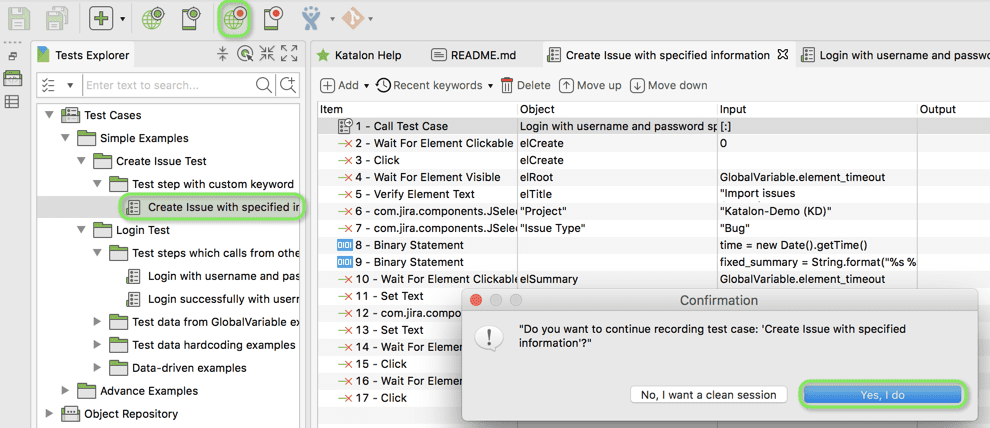
The second approach, test-flow diagrams, involves creating diagrams consisting of structured test blocks.
The test script then runs automatically, based on what actions are specified in the diagram.
As you can imagine, scriptless testing is a valuable approach for testers at every level of expertise.
It presents a valuable alternative for beginners who are new to automated testing, as it enables them to evaluate an application without prior knowledge of coding.
It’s also a good option for seasoned testers who want a quick way to run tests and get results without having to write scripts from scratch.
Using artificial intelligence
Artificial intelligence has emerged as a red-hot topic recently, with its possibilities for QA testing being no exception.
As the name implies, AI employs a range of mechanisms that simulate human behavior in an attempt to replicate human-like reasoning during the testing process.
To achieve this, it uses machine learning and natural language processing (NLP) to produce automated scripts that can thoroughly test an application without any human involvement.
For example, machine learning algorithms can be utilized to recognize patterns in large datasets.
They can then learn from large amounts of data and existing scripts and then use that knowledge to create new ones.
Below you can see one typical machine learning life cycle and how it gradually gathers data and learns until it’s able to build a model that can perform tasks automatically.
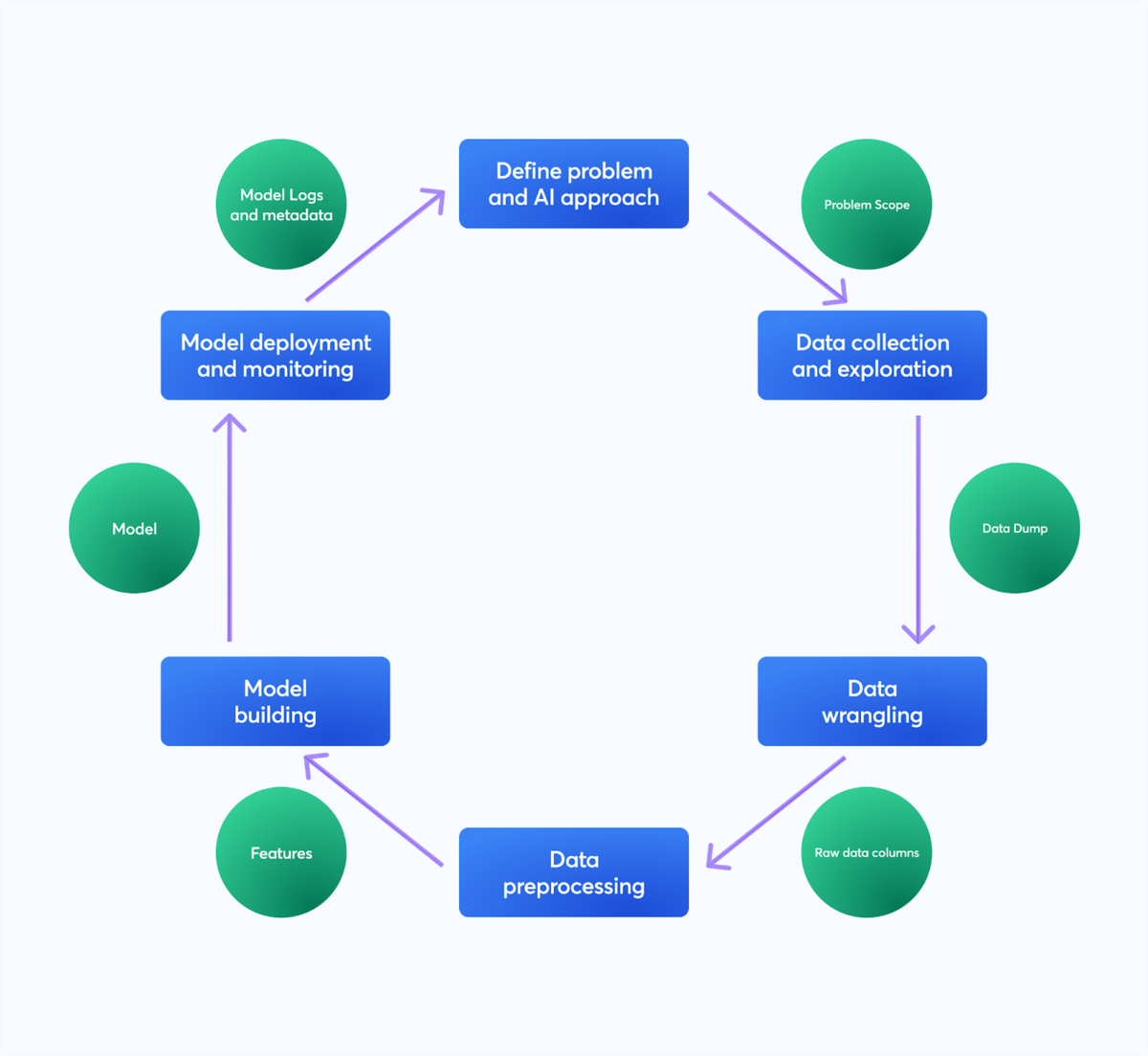
You must admit, the vast potential of this type of methodology is hard to even comprehend.
Additionally, the use of NLP is also highly beneficial in the testing process.
Essentially, NLP refers to the ability of a computer to understand human languages and perform tasks when provided with natural language input.
It’s among the most active domains of research in AI today, with uses including chatbots, machine translation, speech recognition and synthesis, information extraction, sentiment analysis, and question answering systems, among others.
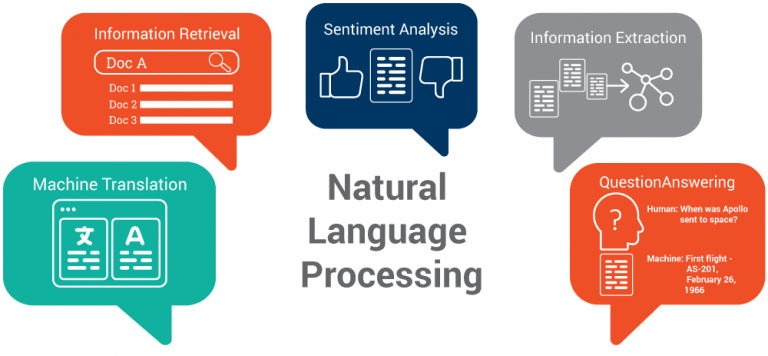
And this can be utilized during mobile app testing, especially in the apps that include some of these features.
In addition to the above, AI is capable of image and object recognition, meaning that its algorithms can also detect, recognize and identify images or objects in an app.
This can come in handy during UI testing, where AI can detect anomalies or bugs that may not be visible to a human tester.
Although AI is still in its early stages, we’re already witnessing how it can revolutionize the way apps are tested:
- Providing faster and more accurate results
- Testing applications that require human input or interaction, like chatbots and voice assistants
- Reducing the number of redundant test cases
- Detecting which tests require prioritization
- Optimizing test coverage
These benefits of AI can help to solve a lot of the testing bottlenecks, which are bound to grow as apps become more complex.
AI can also significantly reduce the burden of testing on humans, allowing them to concentrate on higher-level tasks.
Taking the shift left approach
The shift left approach, another interesting trend in QA testing, involves strategically shifting testing nearer to the development process.
Rather than waiting until the end of the development cycle to test the app, companies engage in early testing to prevent defects from making it into production.
Early and frequent testing not only helps them build high-quality code in less time, but it also eliminates the need for costly maintenance patches later on when problems are discovered.
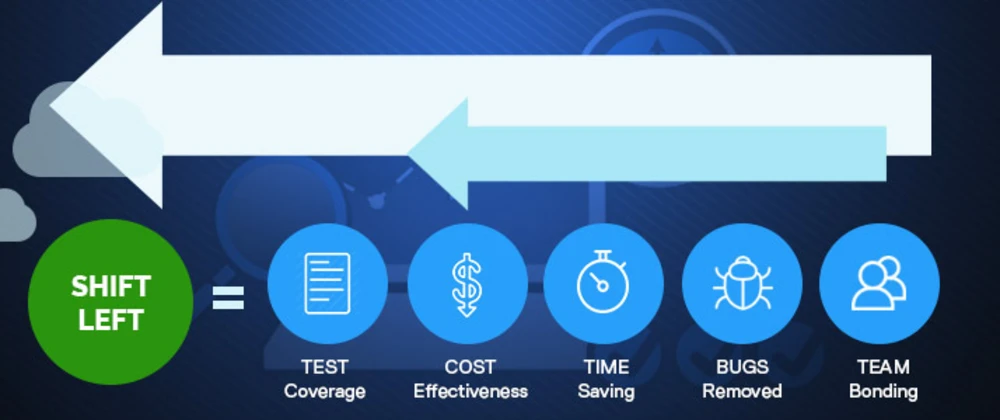
When testing is delayed until the end of development, any bugs that do emerge will typically be more difficult and time-consuming to resolve.
Not to mention that the costs exponentially grow the longer the bug is left in the code.
In fact, it can be up to 30 times more expensive for businesses to resolve defects in production than during the development stage.
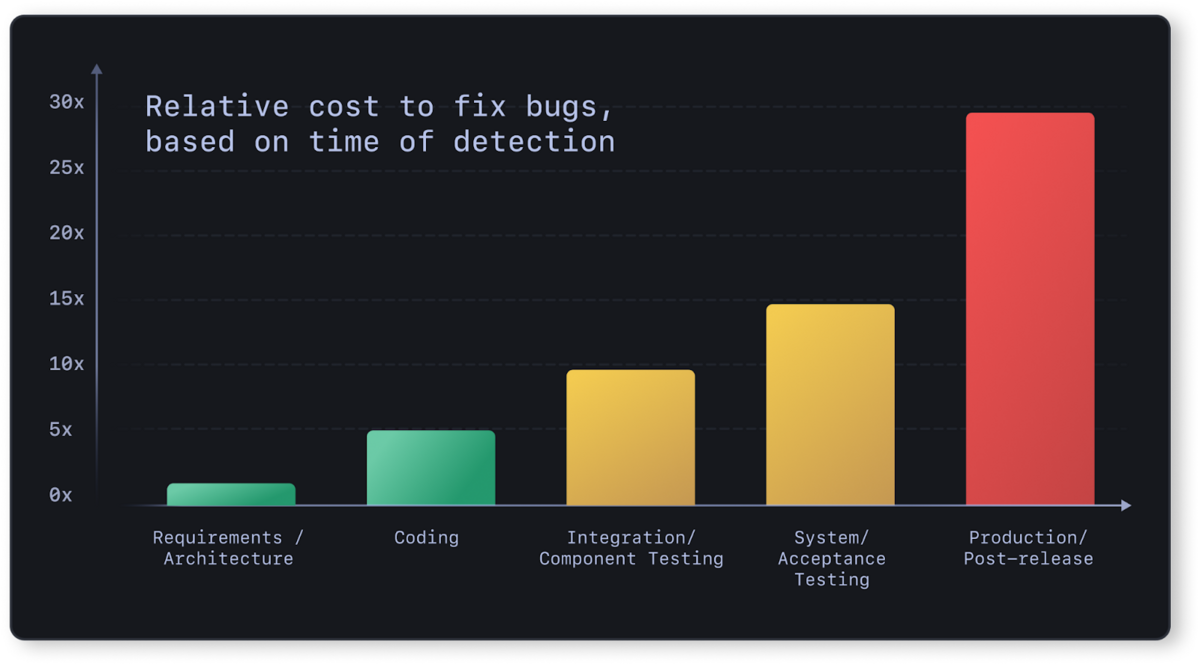
That’s why many companies are now embracing a test-driven development (TDD) process.
This approach ensures that developers write tests before writing code, making bugs easier to catch early in development.
Static analysis is another way of pushing testing further left along the software development lifecycle.
It helps identify issues in the code at a very early stage in the building process by inspecting coding standard violations, syntax errors, undefined values, and so on.
For example, ESLint is a well-known tool that detects mistakes in the JavaScript code as you write it.
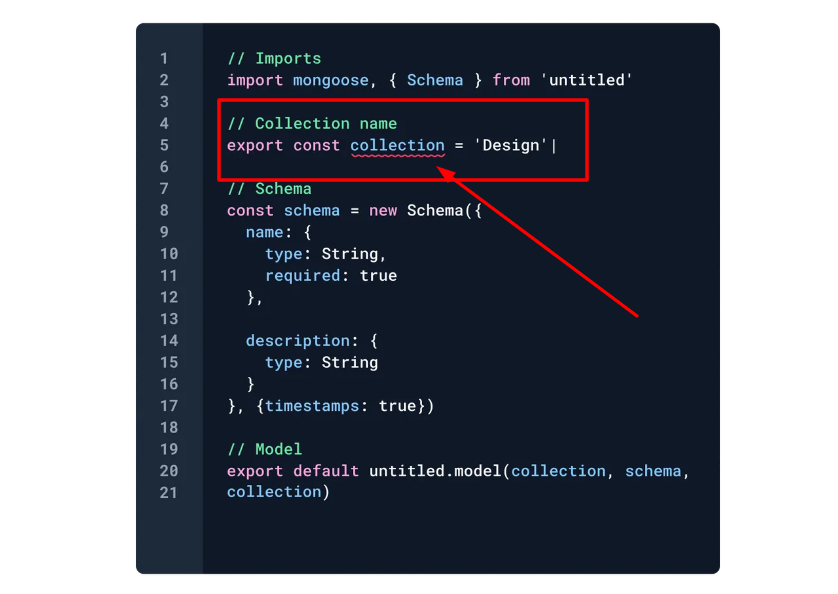
Although not a new concept, shift left testing has grown in popularity in recent years.
It’s one of the most important parts of agile methodology and DevOps culture, enabling businesses to identify problems with their code at an early stage before compiling or deploying it to production environments.
Continuous integration and continuous delivery
In today’s rapidly changing market, companies must be able to change direction quickly in response to new demands.
The methodology that allows them to do so is continuous integration (CI) and continuous delivery (CD).
In a continuous integration environment, developers build and test their code before submitting it to the version control repository.
Once code has been added to the repository, it’s built and tested automatically, usually with unit and integration tests.
This ensures that any new changes don’t break existing functionality. The process is repeated at regular intervals until all code passes all tests, as shown below.
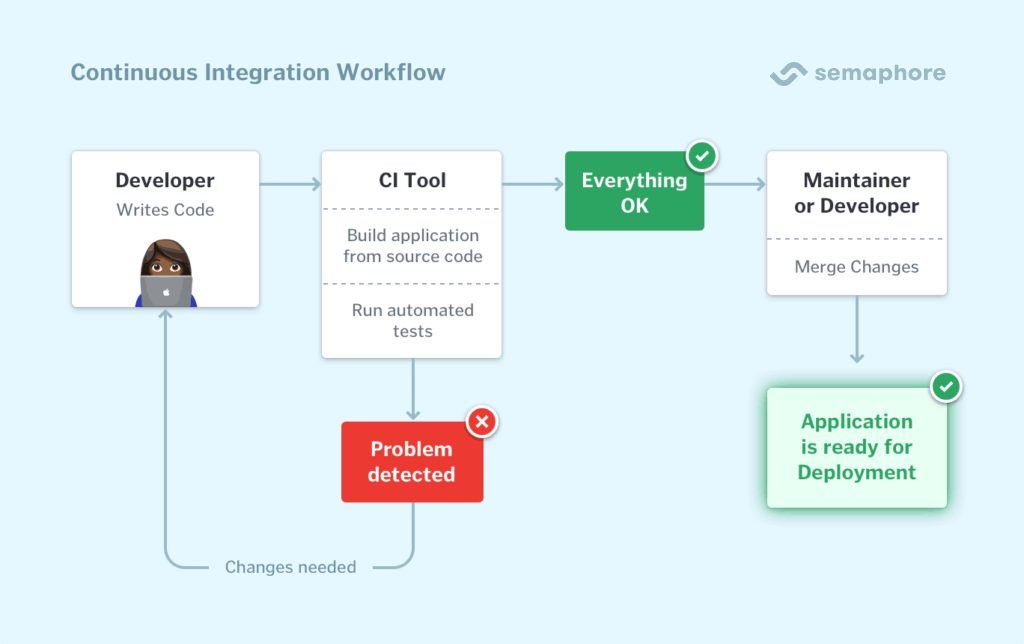
Continuous delivery is the logical next step after continuous integration.
While continuous integration is about building and testing code automatically, continuous delivery covers the deployment of code changes to a staging or testing environment and, if necessary, to the production environment.

Capture, Annotate & Share in Seconds with our Free Chrome Extension!
Reducing the time to market through frequent deployment, continuous delivery allows the team to release apps immediately when they are ready.
Of course, the benefits of this approach are outstanding, with these being just a few of them:
- Faster time to market
- Improved quality of code and fewer bugs
- Ability to quickly respond to changing business needs
- Reduced risk by deploying smaller changes more frequently
- Improved quality through automated testing
When all these advantages are taken together, it’s no wonder that continuous integration and continuous delivery are on the list of hot trends.
Although they aren’t new concepts, they have become increasingly widespread over recent years.
In fact, even Amazon, LinkedIn, Microsoft, and other leading tech companies rely on them to build their services efficiently.
Conclusion
Mobile app testing is a dynamic field that’s always changing and evolving.
That’s why it’s pivotal to stay up to date with the latest trends to keep your testing activities current and effective.
The list of trends that we laid out here is far from exhaustive, but it still includes many of the most important methods for keeping up with advances in the QA testing field.
Hopefully, they’ll help you to approach your testing efforts with fresh ideas and a solid understanding of what’s currently happening in the mobile app testing industry.





